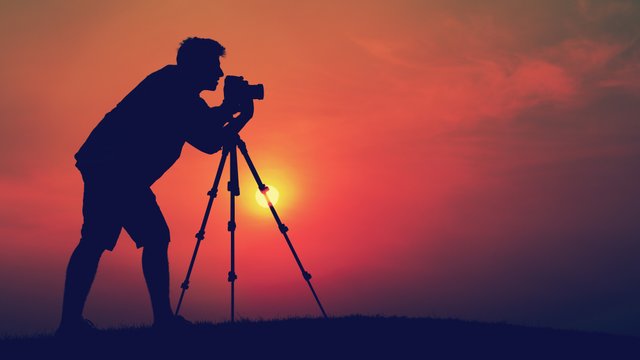Photography: Then and Now - CHANGING TIMES IN PHOTOGRAPHY
My Dear Steamians have you ever wondered how photography got to where it is today? Where and when did it all begin? I can tell you that it hasn’t always been about high precision glass and complicated mechanics. Here is your chance to go back in time and have a look at what it was before a half a second was considered a long exposure.

Image Credit: TechRadar.Com
Camera Obscura (Latin meaning dark chamber) was the beginning of the birth of photography. The Camera Obscura started out as being a fully enclosed darkened room with a hole in one wall, and on the opposite wall, the image would be reflected (upside-down and backwards). This image would be created from the light shining through from the outside of the Camera Obscura, in through the hole, and onto the surface of the opposing wall. Camera Obscura can be dated back as far as the 3rd or 4th century BC in the days of Aristotle.
It wasn’t until the late 1500’s that a man by the name of Daniello Barbaro placed a lens in the hole of the Camera Obscura to create a sharper image. The Camera Obscura didn’t become portable until around the middle of the 17th century, when it was transformed from being a large room down to just a simple box. It had all the same principals as the original camera Obscura; dark, fully enclosed with a small hole at one end, and of course, with the addition of the lens. This was still the very early stages of photography. There was no way of recording the images permanently, the reason being the chemicals just weren’t discovered at the time to make light sensitive paper and to make the image on the paper permanent.

Image Credit: PanacheSchool.Com
In the 18th century a discovery was made that an image was possible to be made on material which was first soaked in silver nitrate. This was a great leap in the advance of photography, but unfortunately the images were only very temporary, and so didn’t last very long.
The first permanent images to be created can be credited to Nicephore Niepce, a French inventor of the early to mid 1800’s. He made a plate covered with a bitumen chemical compound, placed the plate inside the camera, and exposed it to the light for about an eight hour exposure. The bitumen chemical compound he used hardened when exposed to light, and the remaining chemicals could then be washed away after the exposure was completed. The result of this was a negative image (upside down and backwards). He then coated the plate with ink and pressed it onto paper, creating a print of a positive image.
The discovery of the benefits of silver nitrate by Johann Heinrich Schultz in the 1720’s sparked new interest in Niepce’s work. Schultz started experimenting with the help of a man by the name of Louis Daguerre, who had a similar interest in photography, where they worked on developing the silver compounds processes. When Niepce died, it was then up to Daguerre to continue with the experiments. In the following years he discovered that when the silver (on a copper plate) was exposed to an iodine vapour before it was exposed to light, and once the exposure was complete, exposing the silver to mercury fumes, would then form an image that was still light sensitive. To solve this he discovered that placing the material in a salt bath, ‘fixed’ the image (“fixed” meaning it was no longer sensitive to light). The copper plate with the image was then patented as the Daguerreotype.

Image Credit: Nikerosherunone.cc
This was the beginning of permanent photographic images. Many years passed, and the photographic process kept on developing. In the 1880’s, George Eastmann of New York, developed a dry gel on film. This inevitably replaced the plates of the earlier years, and had many benefits especially when it came to photographers no longer having to move around with hazardous chemicals.
Eastmann’s Kodak camera went on the market in 1888. By the beginning of the 1900’s, it was possible that everyone could have a camera, the first one being a Kodak Brownie. From then on, cameras began to come in all shapes and sizes, and film types increased as time went on; roll film, sheet film, 35mm, etc... Lenses became more mechanical, allowing for various different exposures on the more advanced models in or around the mid 1900’s. People could now take their cameras to the beach, or anywhere they wished, and send off the film to be processed. Film cameras began to be built with digitally controlled mechanics, and as technology became more advanced with the invention of the CCD Chip in the early 1970s, Kodak built the first Mega Pixel sensor in the mid 1980’s. These developments in digital technology were the beginning of a new era in photography. Today, the digital photography market has outrun its film predecessor; Film is no longer in the demand which it used to be in the 1990’s and before. Twenty years (or how about another 500 years) down the road, just imagine where photography will be!
I also like photography
Thank you very much for your precious comment and time, brother. Stay blessed.
Thank you very much
For your precious comment and
Time, brother. Stay blessed.
- hamzazahid123
I'm a bot. I detect haiku.
Nice content brother .. all the details mentioned are really good to read ..
I m following u now
Please follow me back .. i would upvote your blog in the future
Thank you Brother, I have followed you.
Thank you brother
Thank you very much for your precious comment and time, brother. Stay blessed.
Thank you very much
For your precious comment and
Time, brother. Stay blessed.
- hamzazahid123
I'm a bot. I detect haiku.